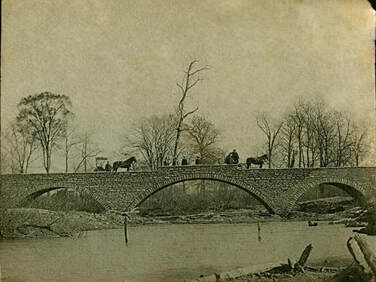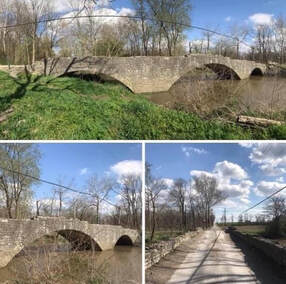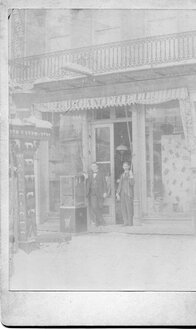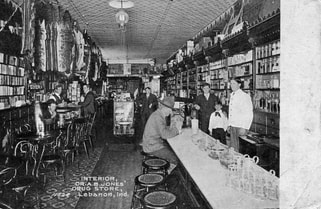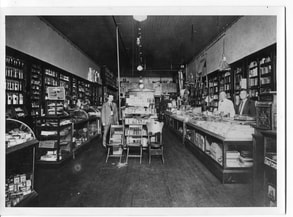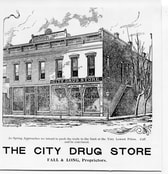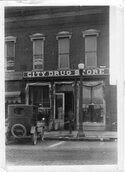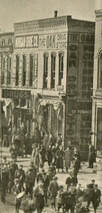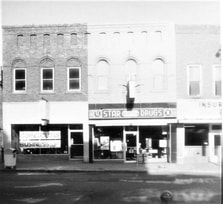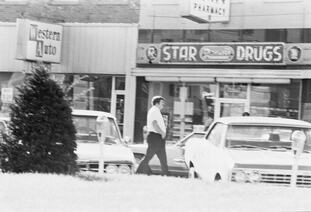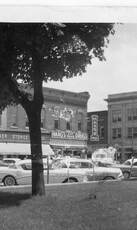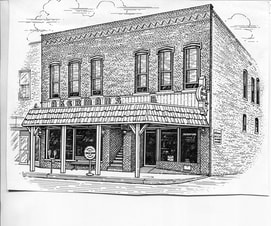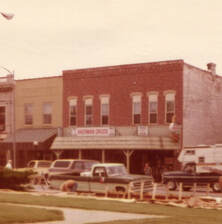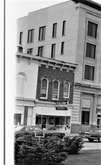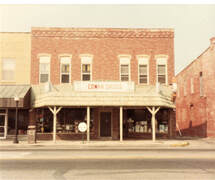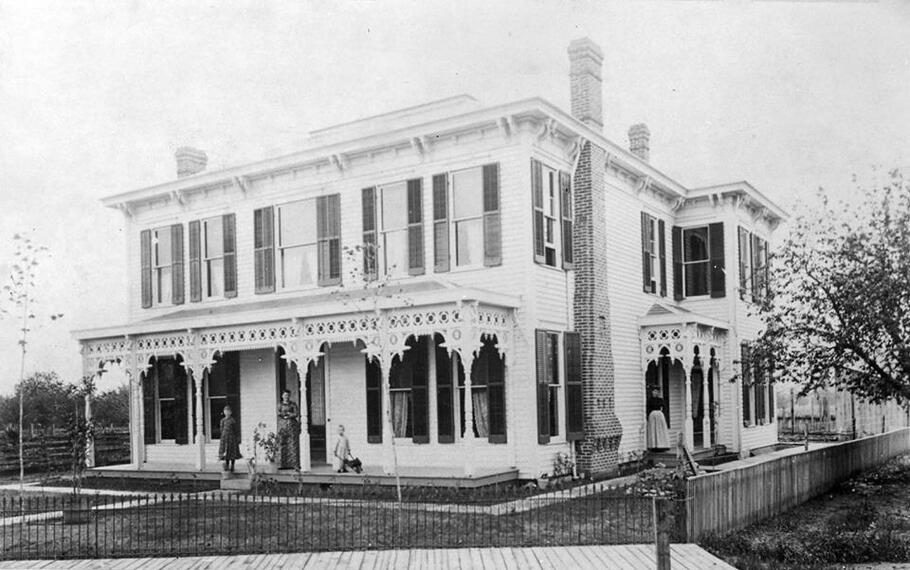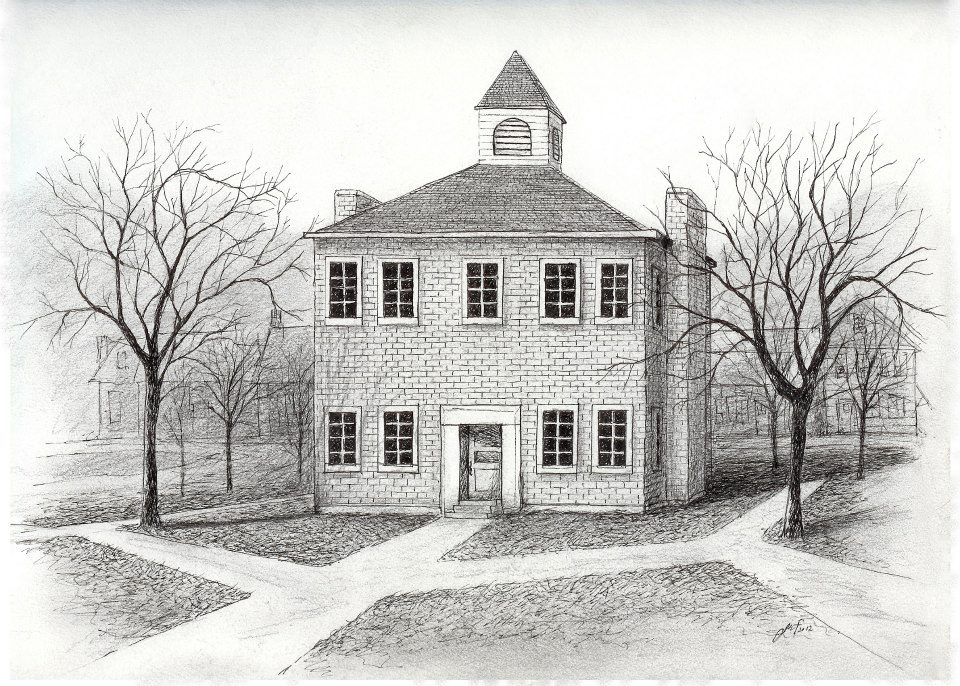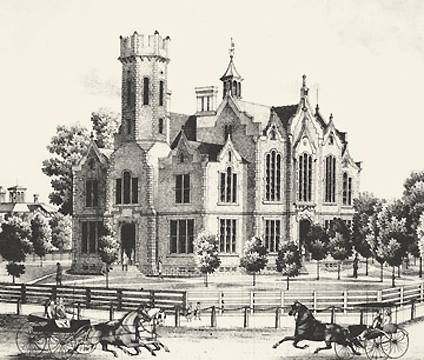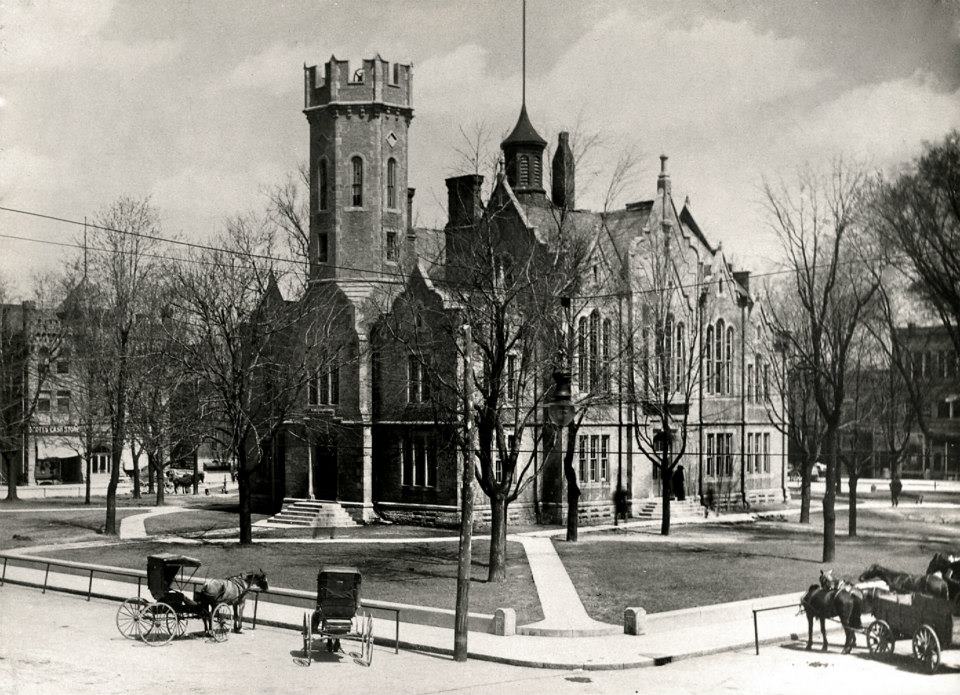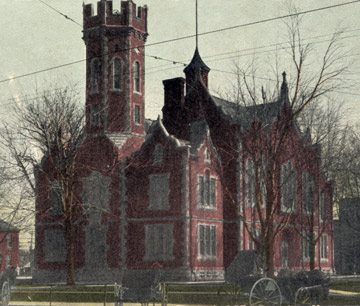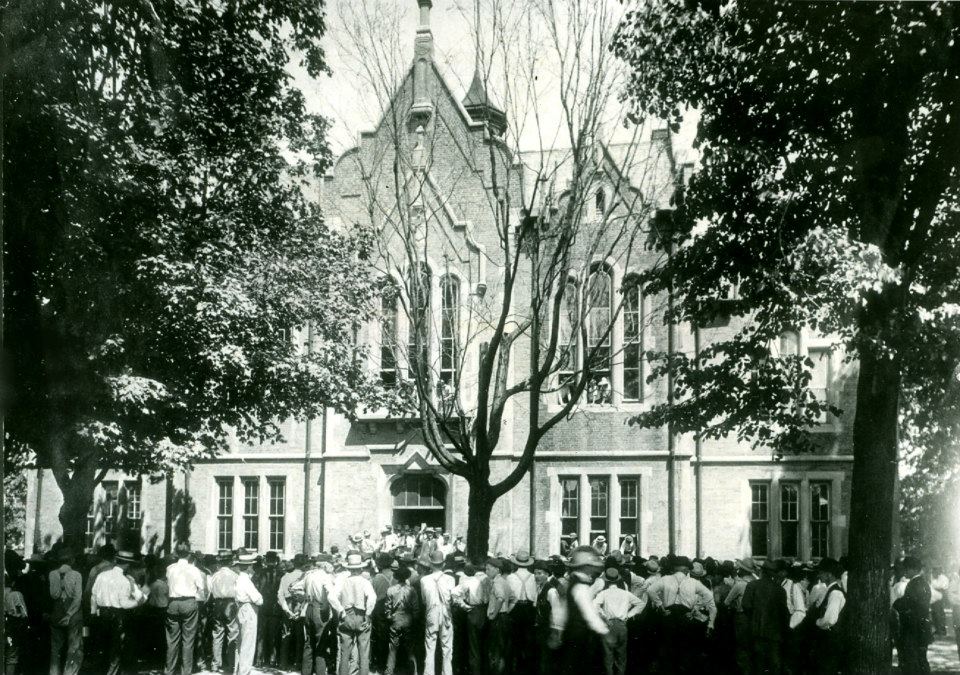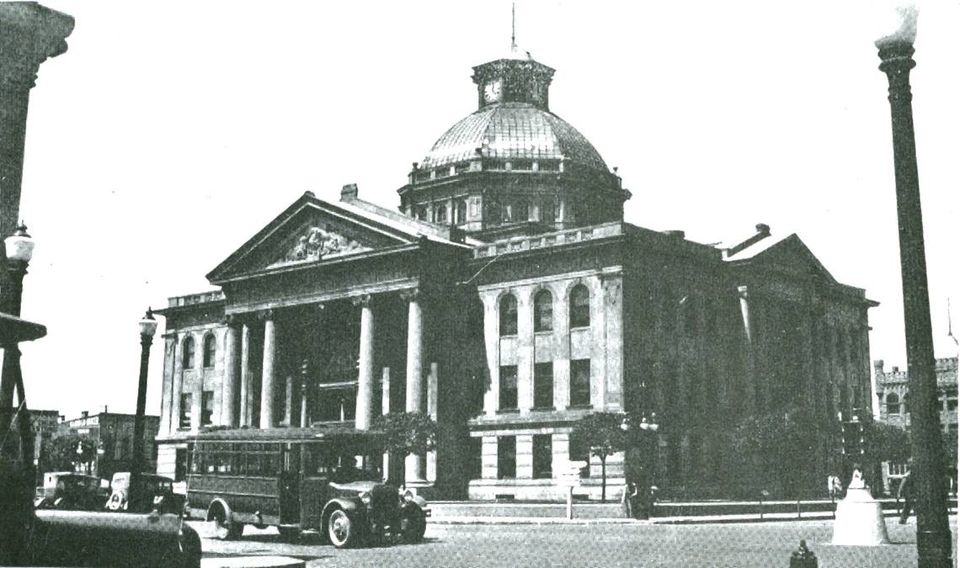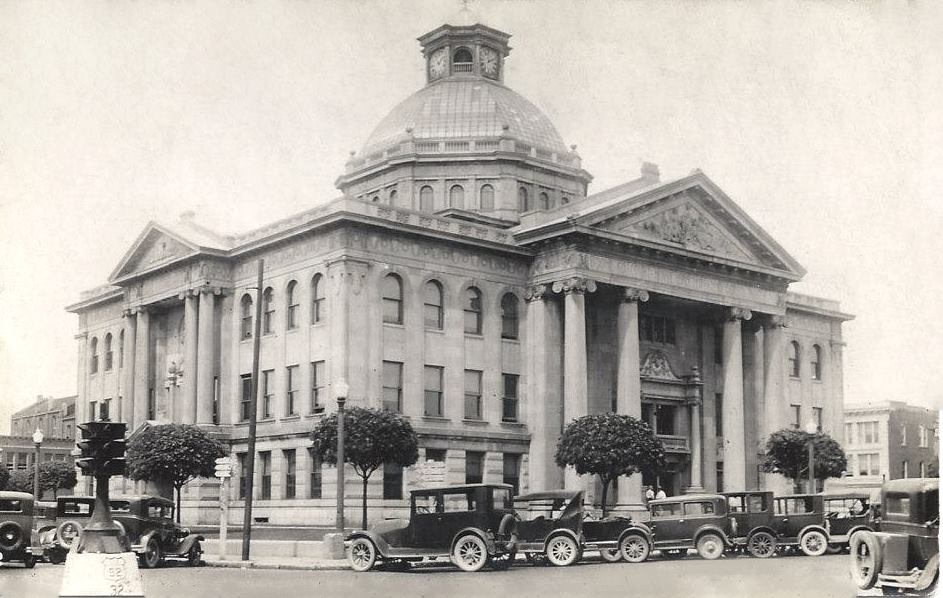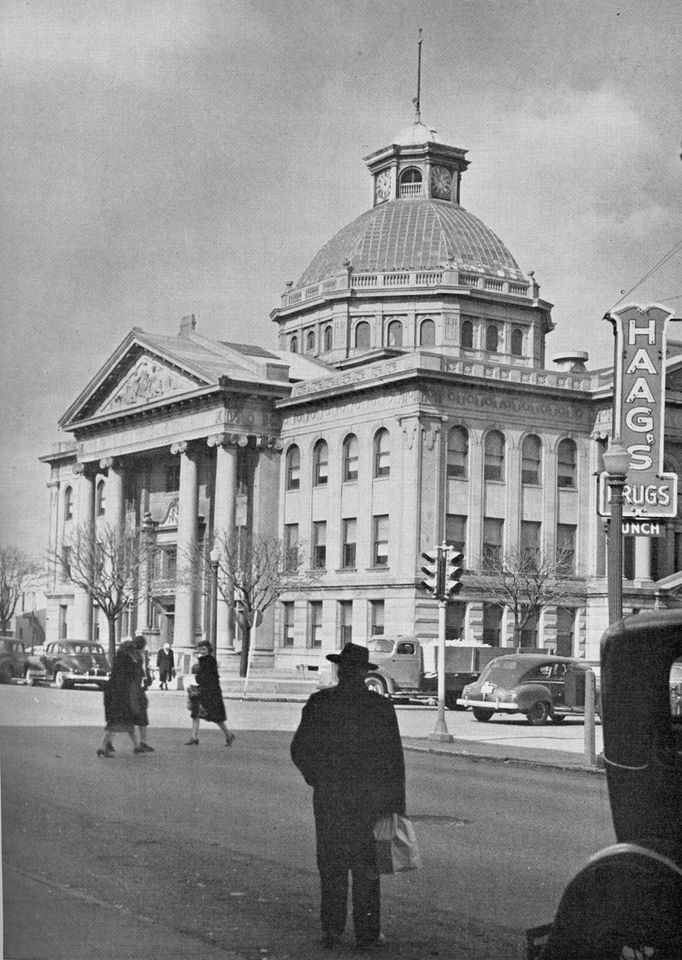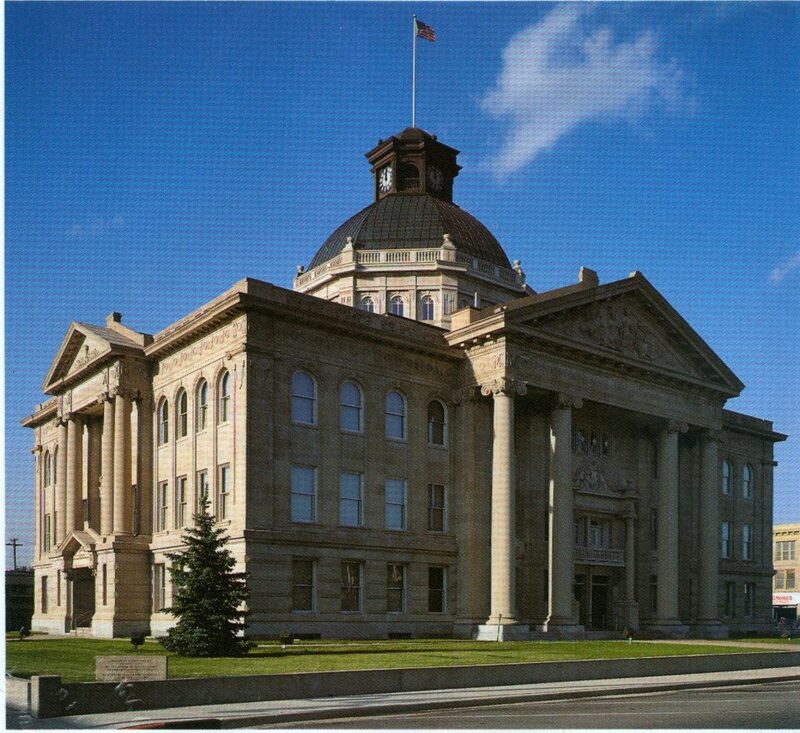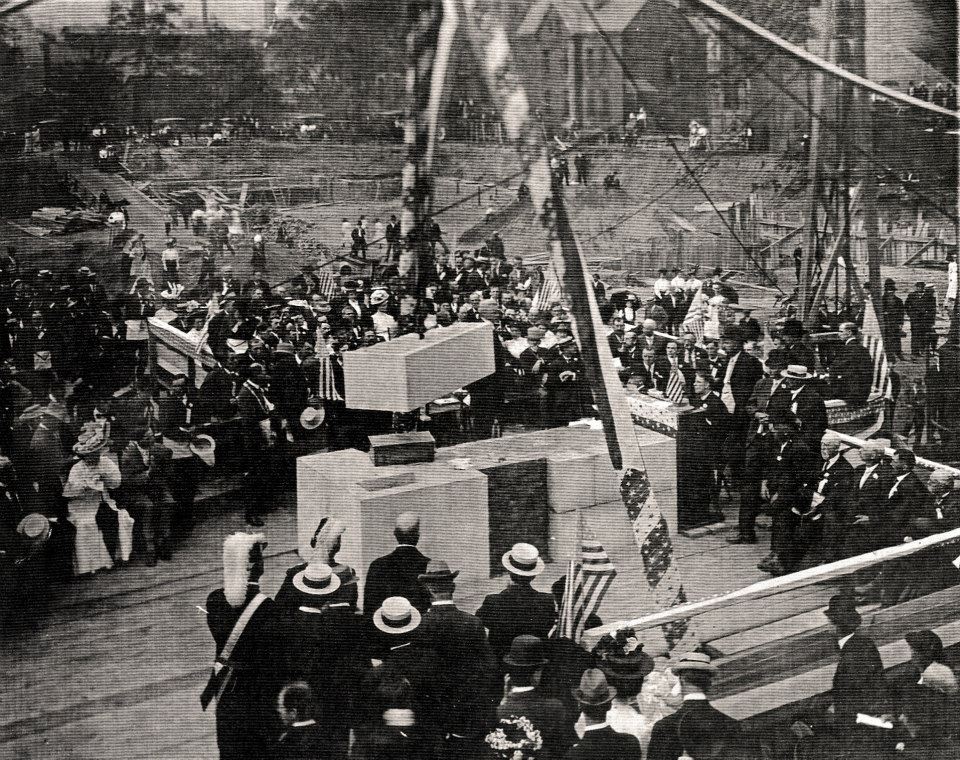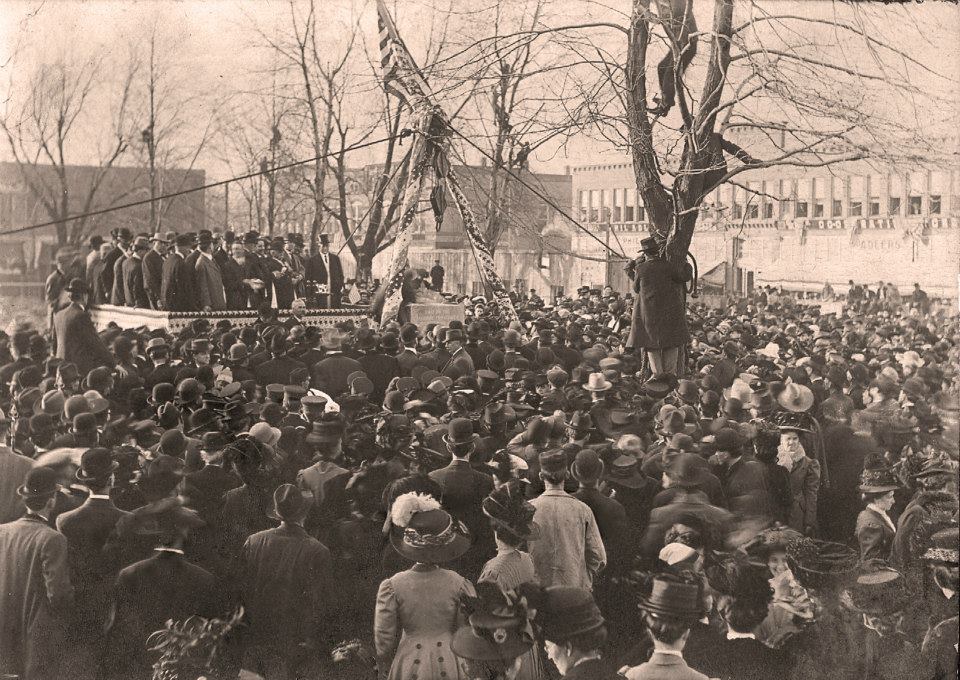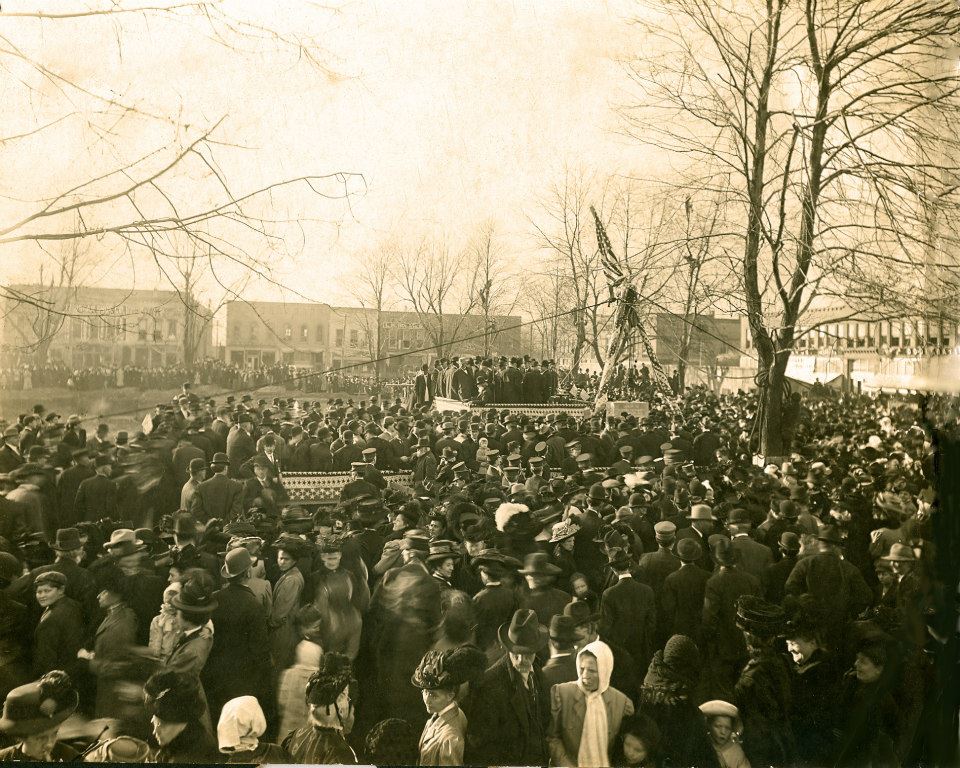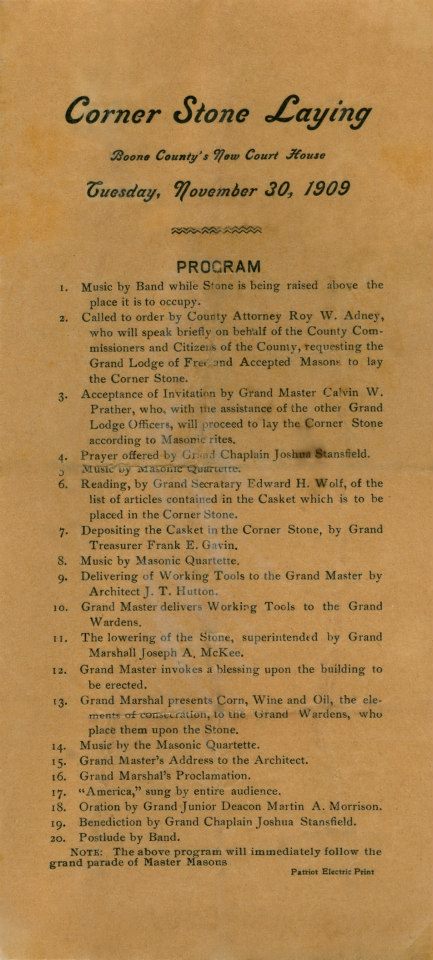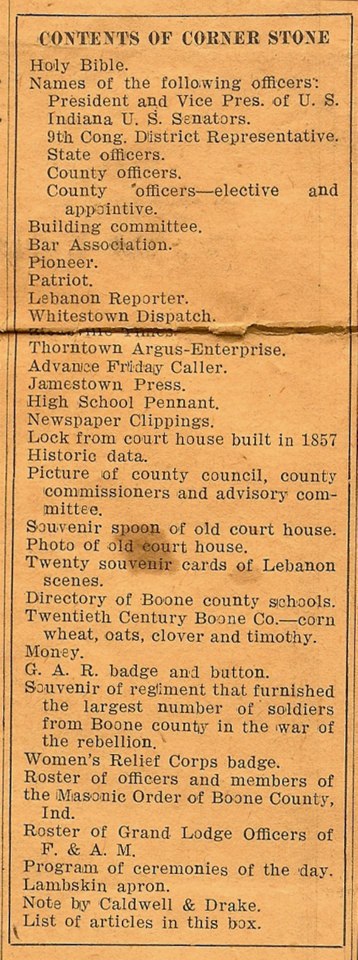SO WHAT HAPPENED WITH SCOTLAND BRIDGE?
On April 10, 2021 the Boone County Historical Society posted on its Facebook Page the pending demolition of the Scotland Bridge in Mechanicsburg, CR 200 E on the Boone-Clinton county line.
The bridge is one of the few true stone arch bridges remaining in Central Indiana but according to Boone County Highway Director Nick Parr, “Bridge 41 is by far the most dangerous, most hazardous stone bridge in the county.” The original rock safety railing was destroyed by pedestrians knocking out the rocks over the years. The deck is also too narrow for two lanes of traffic and too weak for the weight of modern farm machinery. Known foundation issues - the 2-inch crack in one of the bridge’s arches that could cause the bridge to split - has now been exacerbated by severe hydrodynamic scouring along the bridge’s piers that was found by inspectors in 2021. Scouring is the process of forcefully flowing water which can remove soil or rock and is credited as one of three main causes of bridge failure. A public meeting scheduled by the Boone County Commissioners was held April 12 at the Courthouse Annex to listen to public comments regarding the bridge removal.
Following the public meeting, Friends of Scotland Bridge was formed. They met April 22 to research the issue further including possible solutions. Discussed as alternatives to replacing the bridge, the BCHS and Indiana Landmarks recommended a diversion around the bridge connecting 200 E to Scotland Road allowing for a permanent historical reuse of the existing bridge, or relocating the bridge, which would mean numbering and reassembling each stone. The scope and estimated $1 million cost combined to kill the project.
Thanks to two local businessmen, the historic bridge will now find new life in reimagined forms.
Tom Dull of Dull’s Tree Farm and Pumpkin Patch and Caleb Michalke of Sugar Creek Malt Co., both in Thorntown, won bids to remove the bridge’s stones.
Tom Dull submitted plans to the Boone County Highway Department that would use stones from the bridge to recreate a smaller version of the bridge on their property. The 1800s farmstead already houses reassembled log cabins they have found over the years and repurposed as a gift shop, and a bed and breakfast retreat.
Michalke’s plan includes recycling the bridge’s stones to build a new structure where he will germinate malt used to make high-quality malt prized by brewers.
This isn’t the outcome wished for but the beloved Scotland Bridge will live on in other ways.
The bridge is one of the few true stone arch bridges remaining in Central Indiana but according to Boone County Highway Director Nick Parr, “Bridge 41 is by far the most dangerous, most hazardous stone bridge in the county.” The original rock safety railing was destroyed by pedestrians knocking out the rocks over the years. The deck is also too narrow for two lanes of traffic and too weak for the weight of modern farm machinery. Known foundation issues - the 2-inch crack in one of the bridge’s arches that could cause the bridge to split - has now been exacerbated by severe hydrodynamic scouring along the bridge’s piers that was found by inspectors in 2021. Scouring is the process of forcefully flowing water which can remove soil or rock and is credited as one of three main causes of bridge failure. A public meeting scheduled by the Boone County Commissioners was held April 12 at the Courthouse Annex to listen to public comments regarding the bridge removal.
Following the public meeting, Friends of Scotland Bridge was formed. They met April 22 to research the issue further including possible solutions. Discussed as alternatives to replacing the bridge, the BCHS and Indiana Landmarks recommended a diversion around the bridge connecting 200 E to Scotland Road allowing for a permanent historical reuse of the existing bridge, or relocating the bridge, which would mean numbering and reassembling each stone. The scope and estimated $1 million cost combined to kill the project.
Thanks to two local businessmen, the historic bridge will now find new life in reimagined forms.
Tom Dull of Dull’s Tree Farm and Pumpkin Patch and Caleb Michalke of Sugar Creek Malt Co., both in Thorntown, won bids to remove the bridge’s stones.
Tom Dull submitted plans to the Boone County Highway Department that would use stones from the bridge to recreate a smaller version of the bridge on their property. The 1800s farmstead already houses reassembled log cabins they have found over the years and repurposed as a gift shop, and a bed and breakfast retreat.
Michalke’s plan includes recycling the bridge’s stones to build a new structure where he will germinate malt used to make high-quality malt prized by brewers.
This isn’t the outcome wished for but the beloved Scotland Bridge will live on in other ways.
To view the national Register of Historic Places form for Scotland Bridge,
click on http:www.boonecountyhistorical.org/uploads/1/1/2/4/11241918/nal_reg_scotland_rd.pdf
click on http:www.boonecountyhistorical.org/uploads/1/1/2/4/11241918/nal_reg_scotland_rd.pdf
|
1859: Ralph Stark stated in one of his writings that the building at 112 N Lebanon St (currently Cowan Drugs) was built in 1859 by George and Al Coombs. Adjacent buildings to the south were built in 1865 and 1870 (Union Federal Building and Ellis Building respectively).
1909: The plat of Lebanon in 1909 listed a drug store at 112 N Lebanon St. The photo at right was documented to be C W Campbell Drug Store 1911: A photo gallery residing on the second floor of the building (accessed by the stairway open at the sidewalk level) indicates that in the 1911 Lebanon Directory, this studio is identified as Harvey's. 1916: This directory lists several drug stores. Some of these stores have ads in the directory and list the variety of products they carry. Not much is mentioned of prescriptions. One of the drug stores does show a picture of a man looking through a microscope. The drug stores listed are:
|
|
|
By 1930:
|
1935: Mr Hammond dies. At this time a Melvin's Pharmacy is listed at Lebanon and South Sts with Cason's Drug Store on S Meridian St.
The City Drug Store has been purchased by Haag's and moved to the Northeast corner of Main and Meridian Sts.
The City Drug Store has been purchased by Haag's and moved to the Northeast corner of Main and Meridian Sts.
1936: The city directory of 1936 lists Oak Drug Store as Oak Drug Store Akerman Drugs with Akerman Drugs listed as Akerman Drugs Oak Drug Store. Mr Masters is listed as retired in the personal listings with L J Akerman and Robert Delue (R D) listed as druggists. Ruth Akerman is the clerk. The upstairs of 112 N Lebanon (former Harvey's studio) is listed as empty.
1939: The Akerman family is still operating Akerman Drugs. Haag's is still at 101 N Meridian, with Mitchell and Berry at 121 W Main, and now Rexall (formerly Star)
is listed at 118 N Lebanon.
1939: The Akerman family is still operating Akerman Drugs. Haag's is still at 101 N Meridian, with Mitchell and Berry at 121 W Main, and now Rexall (formerly Star)
is listed at 118 N Lebanon.
|
1944: Hammond and Mitchell becomes Mitchell and Berry (121 W Main) Today: None of the above pharmacies are still in operation with the exception of Akerman Drug, now Cowan Drugs. A northside store, Parkside Pharmacy, has been added. In March of 1990, the Lebanon Reporter featured an article with a photo of Bill Noland, Ross Pauley and Roy Isenhour painting Akerman Drugs purple or plum. August of 1993, the wooden facade was removed from the Gift Barn at 116 N Lebanon St showing Cowan Drugs. |
L J Akerman was an active community member. He was the first president of the local Chamber of Commerce and was a charter member of the
Rotary Club in 1920. L J’s son Delue (R D) was Chamber of Commerce president in1942 and again in 1953.
At that time he was also one of the re-chartering members of the local Kiwanis Club and became its president in 1958.
Rotary Club in 1920. L J’s son Delue (R D) was Chamber of Commerce president in1942 and again in 1953.
At that time he was also one of the re-chartering members of the local Kiwanis Club and became its president in 1958.
|
Former Langhar-Frank Residence
129 Indianapolis Ave, Lebanon Built in the summer of 1891 by Fred Langhar and father-in-law Josephus Frank, the house was designed as a double and was occupied by both families. Unfortunately the house was ravaged by a devastating fire on October 18, 2019 and was later demolished. Ralph W. Stark collection |
LEBANON'S SQUARE - through the years
|
|
COURTHOUSES OF BOONE COUNTY
Were you aware that the current Boone County courthouse was the fourth one built?
|
Artist rendering of the first Boone County courthouse in Lebanon built in 1832. It was a two-story log structure located on the north side of the courthouse square just west of the first jail which is just behind. Artist rendering of the second Boone County courthouse built in 1839-40. It was a small two-story brick building set in the center of the courthouse square where the current courthouse now stands. |
The Third Courthouse 1856-57
A more substantial courthouse of Gothic styled brick with stone trim, was built in 1856-57, and cost $33,000.
The architect was William Tinsley, who designed Christ Church Cathedral on Monument Circle in Indianapolis, and Center Hall at Wabash College in Crawfordsville.
When Lebanon auctioneer Colonel J. B. Henderson shouted “Sold to that gentleman over there,” on the bright Monday morning of August 6, 1909, he had disposed of Boone County’s old brick (3rd) courthouse to George T. Miller, Lebanon contractor and his associate, Adolphus Wysong,a local businessman, for $15.00.
By one o’clock that afternoon, Miller had a force of men at work razing the structure preparatory to readying the site
for the erection of the present courthouse which was completed in late 1911, and dedicated on July 4, 1912.
Although careful to salvage every bit of resalable material, Miller is said to have lost money on the deal.
Local urchins were hired to clean mortar from the bricks for 10¢ per hundred. “It was a dirty, dusty, hand-scaring and back-breaking way of making a buck.”
So said Al H. Wynkoop, who was one of Miller’s youthful employees.
Among the dozen or so other “brick-polishers” were Verlin Busby, Hallie Hamilton, Irvin McDonald and Vivian “Red” Stewart.
Much of the debris and rubble, consisting mainly of broken bricks, stone and plastering, was dumped in low spots as fill on lots which
Wysong owned on the West side of Meridian Street and just north of Prairie Creek,
in the Tripps Avenue area. Written by Ralph Stark
The architect was William Tinsley, who designed Christ Church Cathedral on Monument Circle in Indianapolis, and Center Hall at Wabash College in Crawfordsville.
When Lebanon auctioneer Colonel J. B. Henderson shouted “Sold to that gentleman over there,” on the bright Monday morning of August 6, 1909, he had disposed of Boone County’s old brick (3rd) courthouse to George T. Miller, Lebanon contractor and his associate, Adolphus Wysong,a local businessman, for $15.00.
By one o’clock that afternoon, Miller had a force of men at work razing the structure preparatory to readying the site
for the erection of the present courthouse which was completed in late 1911, and dedicated on July 4, 1912.
Although careful to salvage every bit of resalable material, Miller is said to have lost money on the deal.
Local urchins were hired to clean mortar from the bricks for 10¢ per hundred. “It was a dirty, dusty, hand-scaring and back-breaking way of making a buck.”
So said Al H. Wynkoop, who was one of Miller’s youthful employees.
Among the dozen or so other “brick-polishers” were Verlin Busby, Hallie Hamilton, Irvin McDonald and Vivian “Red” Stewart.
Much of the debris and rubble, consisting mainly of broken bricks, stone and plastering, was dumped in low spots as fill on lots which
Wysong owned on the West side of Meridian Street and just north of Prairie Creek,
in the Tripps Avenue area. Written by Ralph Stark
Our Current Courthouse 1909-11
|
The fourth and present courthouse was ordered to be built by the county commissioners in 1909 and completed in 1911.
It was added to the National Register of Historic Places on August 22, 1986. CLICK HERE to view the original Signed National Register of Historic Places application containing a detailed description of the courthouse. |
Photos depicting construction
|
|
The Cornerstone and Time Capsule
|
|
